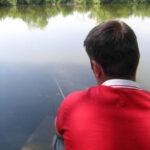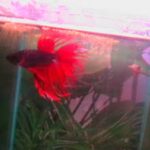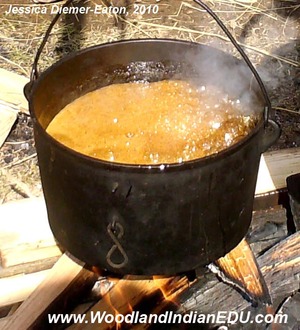A garden pond is a beautiful addition to any garden. You can add a touch of wildlife to your own backyard. While building a garden pond is not an extremely simple do it yourself project, it is certainly one that is doable for the modest do-it-yourself handyman (or woman).
Choose Your Pond Type
This may sound obvious or silly, but the first thing you need to do when building a pond is decide on what type of pond you want. Some gardeners do not want fish at all, but just want the soothing sound of a waterfall. This type of pond will not need to be very large. If you want to have a koi pond, you will need a very large location, as koi can grow to be quite large. A koi pond should be at least three feet deep. Also, koi like to eat many pond plants, so raising koi will limit which types of plants you can have. The most common type of garden pond is a simple water garden, which usually contains goldfish and plants. The area needed for goldfish is smaller than for koi, only about two feet deep.
Choose Your Location
The second thing you need to do when you build your pond is decide where you want to put it. Try to find a place that you will be able to see from your porch or patio, as this will allow you to receive the most pleasure from your pond. Do not make the mistake of making your pond too small, as this will limit the amount of plants and fish you can put in it. You will need to have access to an electrical outlet, so plan accordingly. You can install a simple outlet on a stand if needed. You do not want extension cords crossing your yard, and you will need electricity to run your pond.
If you have a slope to your yard, put your pond where runoff will not go into it. Fertilizers and other chemicals will harm your aquatic life. You may need to build up the edges of your pond to accomplish this. If you are planning on growing water lilies, your pond will need at least four hours of direct sun a day. Keep your pond away from overhanging trees that will drop waste into the water.
Determine the Size of Your Pond
The best way to determine the shape and size you want is to lay it out with a large piece of rope. Consider a non-standard shape, as this makes a very pleasing, natural looking effect. Once you have determined your shape, measure the longest length and width. Add the depth twice to these measurements, and you will know the size you need for your pond liner.
Dig the Hole
The fourth step is to dig your hole. Dig it to the desired depth, but leave a ledge around the edge that is about one food deep. This will be a place to put potted plants. If you are going to include a waterfall, dig the hole with a slight slope sloping away from where the waterfall will be. Lay a board across the top of the pond, and put a level on the board to check if the edges are level. Build up edges as necessary.
Position Equipment
If you are going to install an external pond filter or skimmer this is the time to put them in place. Skimmers are buried beside the pond. If you are including a waterfall, dig the ditch for the plumbing. A pond filter is highly recommended to keep your pond inhabitants healthy.
Install the Pond Liner
Installing the pond liner is easier than it seems. Place the liner in place, put a few rocks around the edges to hold it in place. Begin filling it slowly with water. As it fills, smooth out any wrinkles, and where needed, create neat creases. Connect all equipment before finishing.
Place Stones Around Liner
Around the edge of your pond, you will want something to keep the liner in place. Smooth, flat stones create a nice edge to your pond. Trim the liner to about a foot overhanging the edge of the pond, then place edges around the pond. Be creative to make this look natural. Consider planting some plants between stones, or decorating with sand or pebbles.
Stock Your Pond
Once your pond is up and running, it is time to stock it with plants and animals. Add a dechlorinator to the water to remove any harmful chemicals. The plants should be added as soon as possible, as they help condition the water for the fish. The most important plant to add is Anacharis, as it eats the nutrients that cause algae to grow. Place some potted plants around the edge, and plant some underwater or floating plants in the pond. Plants should shade approximately 66 percent of the pond’s surface. Do not add too many, though, or you may not be able to see your fish!
As you add fish, do so slowly. It takes time for the helpful bacteria to grow in the tank, and the first fish you add may not do well. You can add packaged bacteria to your pond at the beginning, but there is little else you can do to condition the pond. As the fish live in it, the bacteria they need will be produced naturally.
A backyard pond can provide a relaxing oasis from the hassles of modern life. Installing one is easy, if you are careful and plan well. Make your plans to install a backyard pond today!
Reference:
- For more infomation visit www.watergarden.com





